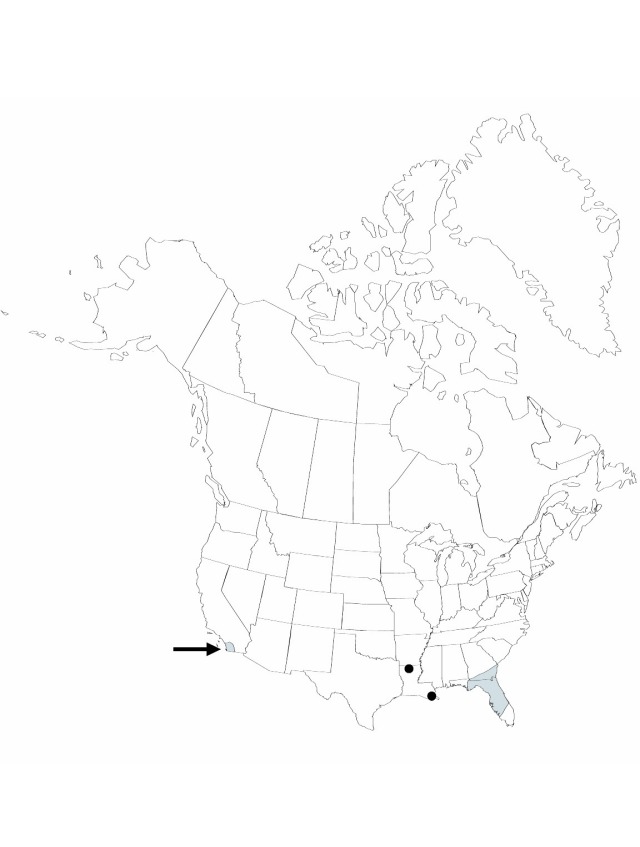Herbs, annual. Roots thin, rhizomes short, subterranean, bearing cleistogamous flowers produced from base of plant. Stems ascending to decumbent or occasionally scrambling. Leaves: leaf sheaths, not auriculate, often with red hairs at summit; blade ovate to lanceolate-elliptic, (1–)2–9(–11) × 1–3(–4.5) cm, apex rounded, obtuse or acute, pubescent. Inflorescences: distal cyme often exserted and 1-flowered, sometimes vestigial; spathes often clustered, subsessile (peduncles 1–3.5 mm), funnelform, 0.5–1.5(–2) cm, margins connate basally, pubescent. Flowers: chasmogamous flowers bisexual and staminate, subterranean cleistogamous flowers bisexual; petals of staminate flowers all blue (rarely lilac), proximal smaller; lateral stamen filaments not winged; staminodes 2–3; antherodes yellow, cruciform; pollen white; medial stamen pollen yellow. Capsules 3-locular, 2-valved, 4–6 mm. Seeds 5, brown or blackish, seeds of adaxial locule 1.7–2.5 mm, shallowly reticulate, farinose. 2n = 22.
Phenology: Flowering spring–fall.
Habitat: Citrus plantations, fields, yards, and other cultivated and disturbed sites
Distribution

Calif., Fla., Ga., La., neotropics, native, paleotropics.
Discussion
Commelina benghalensis was first recognized and collected in California in 1980. The California plants are approximately hexaploid and represent a separate and much later introduction than the southeastern plants. The species is federally listed as an Obnoxious Weed.
Selected References
None.